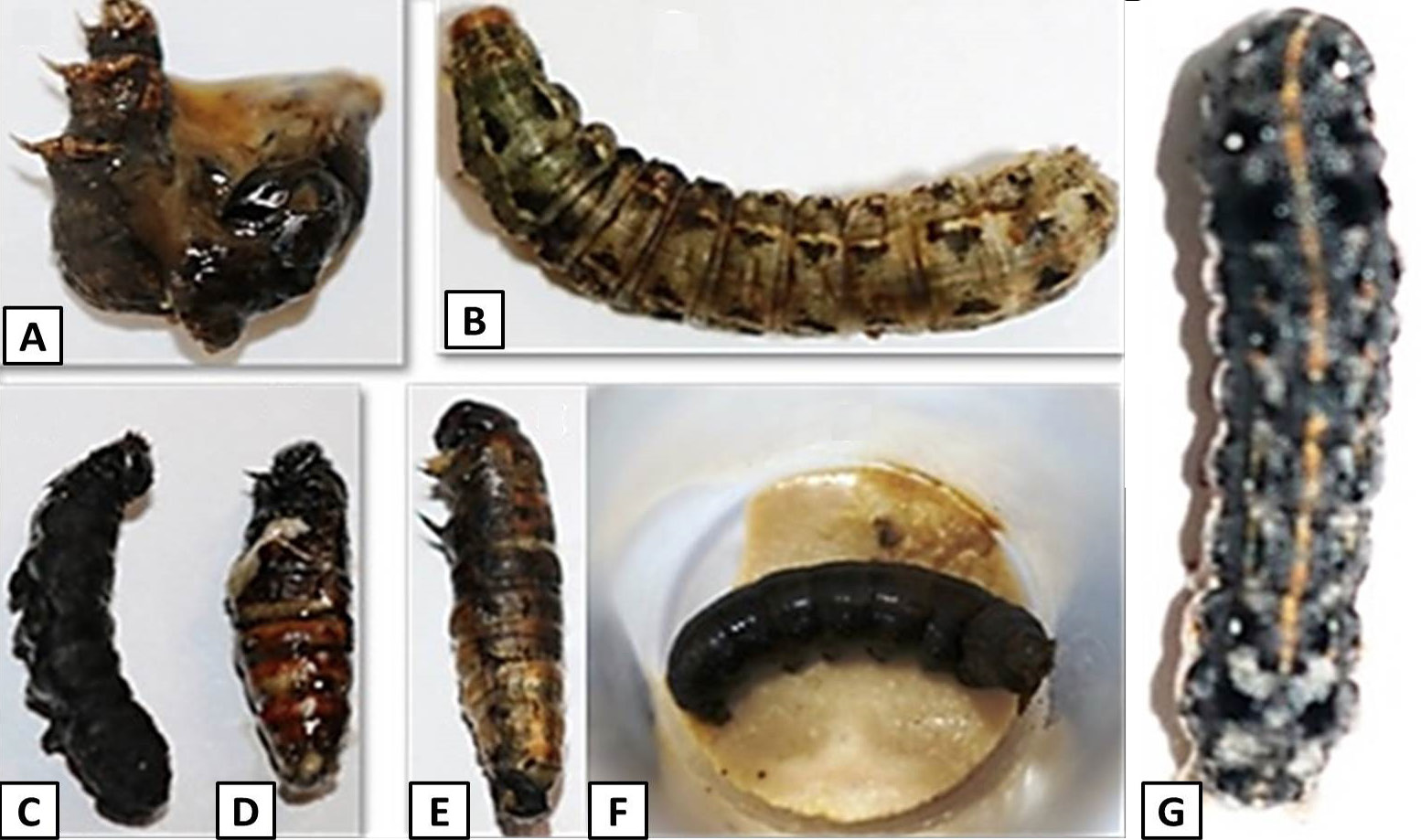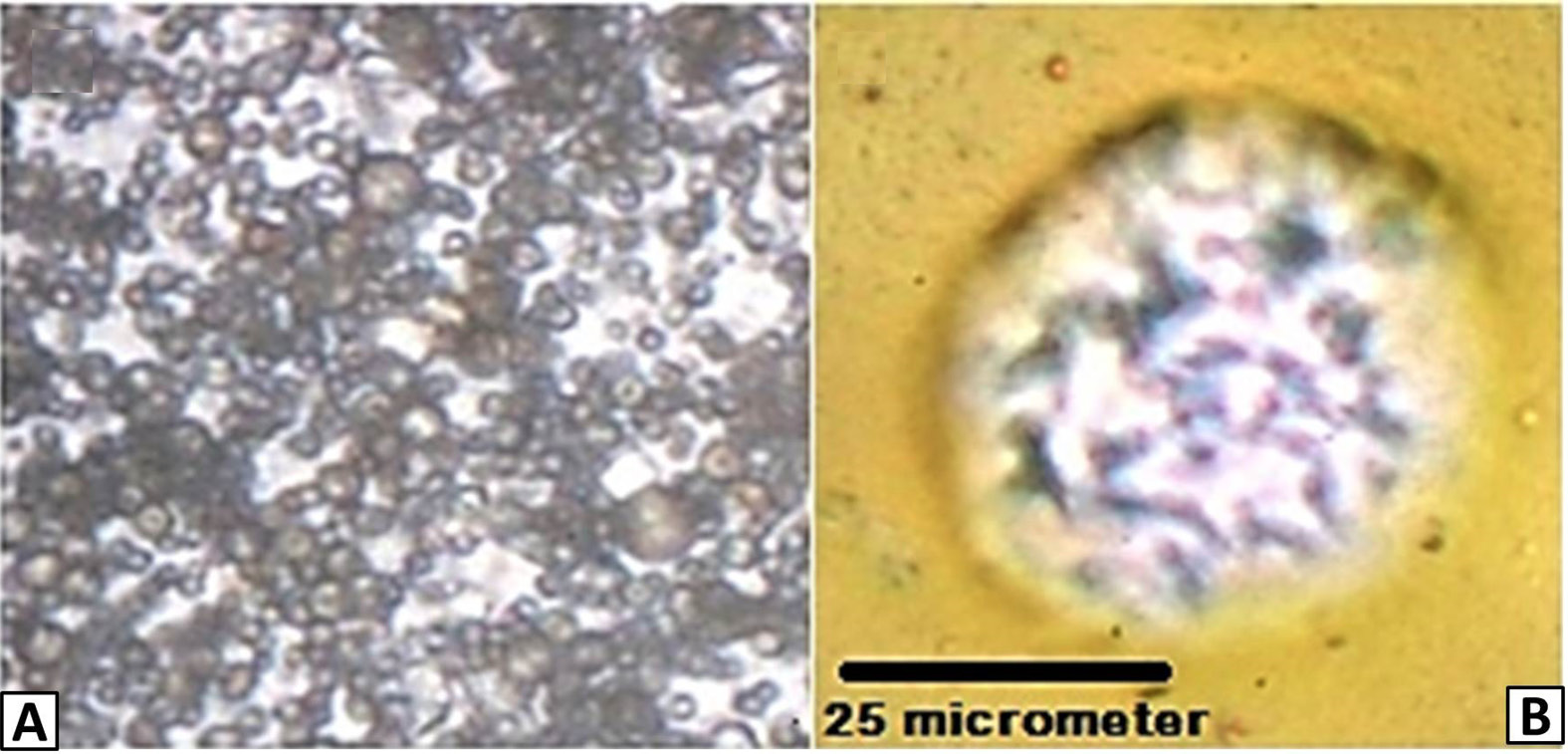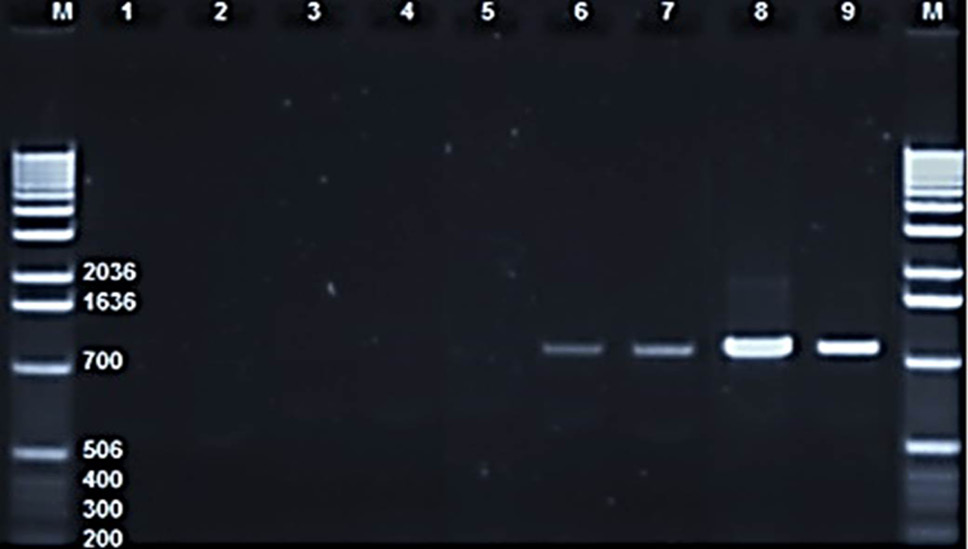Molecular Identification and Pathological Characteristics of NPV Isolated from Spodoptera litura (Fabricius) in Pakistan
Molecular Identification and Pathological Characteristics of NPV Isolated from Spodoptera litura (Fabricius) in Pakistan
Jam Nazeer Ahmad1,2,*, Rashid Mushtaq1, Samina Jam Nazeer Ahmad1,2, Sumaira Maqsood3, Ishita Ahuja4 and Atle M. Bones4
NPV infected S. litura: A, typical NPV symptom of NPV ruptured infected larvae, usually die 4–9 days after infection, disintegrate and release a virus-laden fluid; B, slow move NPV infected swollen malformed pale brown larva; C, slow move NPV infected swollen malformed dark larva from 5th instar; D and E, malformed pre-pupae; F, laboratory propagative NPV infected larva; G, healthy larva.
A, NPV infected S. litura viral occlusion body’s polyhedra under light microscopy; B, degenerating (ruptured) infected S. litura cell.
PCR detection of NPV from S. litura infected samples from Pakistan by using NPV LEF8- specific primers: Lane 1-3, non-infected S. litura larva; Lane 4-8, NPV infected S. litura larva (Pak-15 Faisalabad strain); Lane M, 1 kb DNA marker (Invitrogen).
Molecular phylogenetic analysis by maximum likelihood method of Pakistani isolate SltNPV-FSD15 strain based on nucleotide sequences with the corresponding partial late expression factor-8 (Lef-8) gene of 12 nucleopolyhydroviruses associated with S. litura (NPVs). S. litura associated NPV isolates origin and GenBank accession numbers used in the sequence analysis and phylogenetic tree construction; AY706581.1 S37 (Germany), JF276035.1 Banglore (India), AB451187.1 (AB326103.1, AB451187.1, AB583682.1 (Japan). The numbers represent bootstrap percentage values based on 1,000 replicates.














